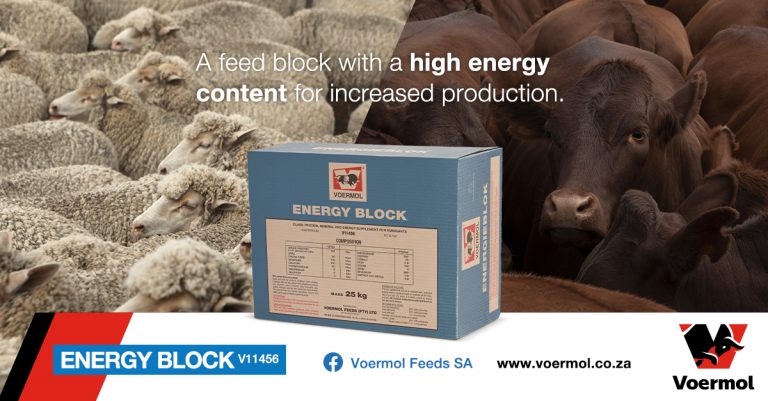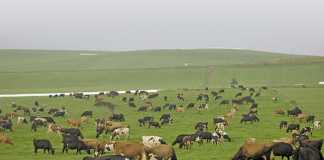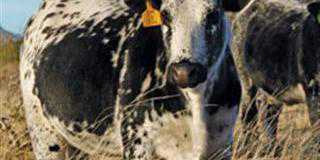
Animal production in Southern Africa has traditionally relied on natural veld for part of or the whole life cycle of the animal, and the cost of beef production on the veld will always be the lowest, even at expensive land prices.
Moreover, the limitations of veld in efficient animal production systems are not a concern if the implemented supplementation programme complements the nutritive value of the veld during different seasons of the year.
Veld production and management
Veld management practices can lead to the deterioration or improvement of the veld. The effect of veld condition on several production parameters are well documented. In a study by Snyman (2003), veld in good condition with a basal coverage of 8,3% was compared with ‘reasonable’ veld with a basal coverage of 6,4%, and poor veld with a basal coverage of 2,9%.
The dominant species on good veld include T. triandra (rooigras) and D. eriantha (finger grass); on reasonable veld the dominant species include E. chloromelas (curly leaf), E. lehmanniana (Lehmann’s love grass) and S. fimbriatus (bushveld dropseed); and on poor veld the dominant species include A. congesta (tassel three-awn) and T. Koelerioides (common carrot-seed grass).
The production of dry matter on the good veld was 1 238kg/ha; on reasonable veld it was 768kg/ha; and on poor veld it was 368kg/ha, with respective grazing capacities of 5,2ha/LSU, 8,3ha/LSU, and 19,4ha/LSU.
The carrying capacity of good veld is approximately 270% better than that of poor veld, and other criteria such as evapotranspiration, rainwater runoff and sediment loss are much less on good veld.
Veld in a good condition is also much less sensitive to drought, and proper management practices will reduce drought risks. It is therefore clear that the conservation of veld quality should be at the centre of a farmer’s approach to livestock production. A practice that undoubtedly improves veld production, veld composition and animal production is the implementation of a full rest period during the growing season every second or third year.
Seasonal rest
Seasonal rest not only allows plants to rest, but also to recover by building root reserves. Kemp et al found that the production of rooigras in sourveld areas improved 170% after a seasonal rest, compared with rooigras that was grazed the previous season.
In sweetveld areas, it could even be necessary to allow the veld to rest for two consecutive growing seasons to promote vigour and production. Various studies have shown that a stock load in line with the production ability of the veld yields the highest profit per hectare.
Over-grazing can be advantageous over the short term, but has disastrous financial consequences on the longer term. In contrast, a conservative stock load and good veld management reduce drought risk.
Veld quality
Du Toit, Louw and Malan drew the following conclusion as far back as 1940 after a comprehensive survey on the composition of pastures: “Judged by the estimated requirements of cattle and sheep for growth, all South African pastures, composed mainly or wholly of grasses, are deficient in phosphorus, crude protein and in certain areas sodium, for a period ranging from five to nine months of the year, depending on the area.
“There are indications that in certain of these regions, the pasture may be deficient in phosphorus throughout the year.
“Provided sufficient food is available, an intake of phosphorus, crude protein or sodium below the optimum requirements for growth, will seldom occur on pastures composed mainly of bushes.”
The nutritional value of pastures thus differs as drastically as the environments in which they are found, and there is no one-size-fits-all approach to correct the nutritional deficiencies and/or imbalances in all types of pasture.
Voermol Feeds, a pioneering force in the field of supplementary feeds for ruminants for over 55 years, has developed systems and products that complement deficiencies and/or imbalances in specific areas.
For example, Voermol’s three-phase lick programme was developed for a cow-calf system in areas where big differences occur in the nutritional value of summer and winter pastures and where acute to moderate deficiencies in phosphorus occur.
The purpose of the Voermol three-phase lick programme is to ensure that the cow herd’s condition and nutritional status is adequate during the critical stages of the production year to ensure a high weaning percentage and acceptable weaning weights for the environment. The three-phase lick programme briefly entails the following:
Phase 1: Wet season licks (approximately 150 days)
This period starts approximately four to six weeks after good rain. The veld is abundant, green, high in protein, highly digestible and palatable. Phosphate and trace elements are the most limited nutrients on green natural veld and the purpose of the wet season lick is to maximise growth.
Depending on the area and infrastructure on the farm, one of the following products may be used: Voermol Superfos (V17422) or Voermol Rumevite 6P (V11995). Both these products require no further mixing and can be fed as is. In areas where salt is readily available, mix Voermol Rumevite 12P (V11994) with 50% salt. In high rainfall areas, consider the Voermol Phosphate Block (V10264) to limit lick losses.
Phase 2: Dry season licks (approximately 150 days)
This period starts in autumn when temperatures start dropping, rainfall declines and the veld grows at a slow rate. It is recommended that beef producers bridge this period with a transitional lick, particularly in sourveld areas where summer and winter pastures vary considerably.
The advantage of this practice is that the last phosphate supplement can still be given and animals become accustomed to the urea contained in the dry season licks. Voermol Superfos is a transitional lick. You can also mix a transitional lick with Voermol Premix 450 (V4676) or Voermol Dundee lick Concentrate (V10737).
As soon as plants are dormant and their nutritional value therefore poor, dry season licks must be provided. Dry season veld is dry, low in protein, poorly digestible and less palatable, causing lower veld intake. The primary deficiency is protein, or more specifically nitrogen (N) for the rumen’s micro-organisms.
Therefore, protein and, in particular, degradable protein and non-protein-nitrogen (NPN and urea) are the most important nutrient in winter licks to maintain body condition. Various licks are available, depending on the individual farmer’s environment and preferences.
These include Voermol Premix 450 (V4676), Dundee Lick Concentrate (V10737), Ekonolick (V11147), Highveld Lick (V16150), Protein Block (V10448) and Winslek Concentrate (V17865). The nutrient specifications and feeding recommendations of each of these products are available on the Voermol app, or in the Voermol product guide.
Phase 3: Late dry season supplements; production lick (approximately 60 days)
In the late dry season, veld is usually very dry and very low in protein with low digestibility; intake is also low with little available material. The purpose of a supplement is to limit a loss of mass and energy and protein must be provided by a production lick.
This period is the most expensive and producers must therefore be very selective when providing licks. Cows calving in this period must be given a production lick. Products to consider are Voermol Production Lick (V10108) or Voermol Super 18 (V355). Production licks can also be mixed with Premix 450, Highveld Lick, Dundee Lick Concentrate or Winslek Concentrate (refer to the Voermol Product Manual or Voermol app).
Intake
A typical beef cow weighing on average 450kg will consume approximately 4,1t of veld per year. Its intake in the wet season will be approximately 2,7% of its body weight (BW), whilst in the dry season and due to the lower passage rate and unpalatability of the grazing, intake will drop to about 2,2% of BW.
During late pregnancy and early lactation (peri-natal period), cows will consume at their highest rate due to their high nutrient requirements. By following the three-phase lick programme as discussed above, the total annual intake of licks for these cows will only be around 165kg to 200kg. This equates to less than 5% of her annual feed intake.
For more information, email Dr Francois van de Vyver, national technical manager at Voermol Feeds, at [email protected].













